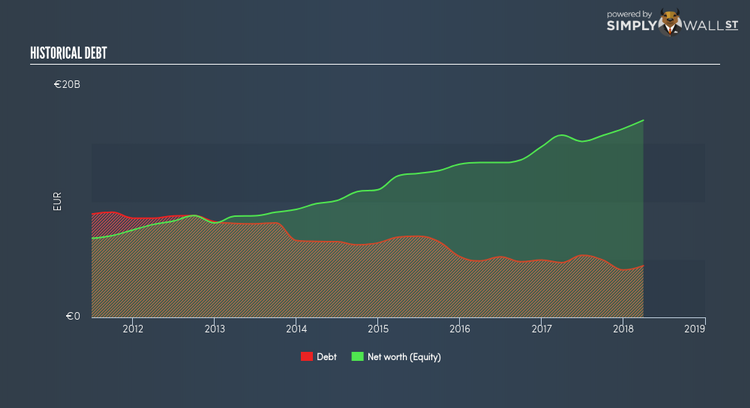What Investors Should Know About Continental Aktiengesellschaft’s (FRA:CON) Financial Strength

Continental Aktiengesellschaft (DB:CON), a large-cap worth €44.30B, comes to mind for investors seeking a strong and reliable stock investment. Market participants who are conscious of risk tend to search for large firms, attracted by the prospect of varied revenue sources and strong returns on capital. But, its financial health remains the key to continued success. This article will examine Continental’s financial liquidity and debt levels to get an idea of whether the company can deal with cyclical downturns and maintain funds to accommodate strategic spending for future growth. Note that this information is centred entirely on financial health and is a high-level overview, so I encourage you to look further into CON here. View our latest analysis for Continental
How much cash does CON generate through its operations?
CON’s debt levels have fallen from €4.95B to €4.09B over the last 12 months – this includes both the current and long-term debt. With this reduction in debt, CON’s cash and short-term investments stands at €1.88B for investing into the business. Additionally, CON has produced cash from operations of €5.22B over the same time period, resulting in an operating cash to total debt ratio of 127.64%, meaning that CON’s operating cash is sufficient to cover its debt. This ratio can also be interpreted as a measure of efficiency as an alternative to return on assets. In CON’s case, it is able to generate 1.28x cash from its debt capital.
Can CON pay its short-term liabilities?
At the current liabilities level of €14.19B liabilities, the company has been able to meet these obligations given the level of current assets of €15.40B, with a current ratio of 1.09x. Usually, for Auto Components companies, this is a suitable ratio since there is a bit of a cash buffer without leaving too much capital in a low-return environment.
Can CON service its debt comfortably?
CON’s level of debt is appropriate relative to its total equity, at 26.20%. This range is considered safe as CON is not taking on too much debt obligation, which can be restrictive and risky for equity-holders. We can check to see whether CON is able to meet its debt obligations by looking at the net interest coverage ratio. Ideally, earnings before interest and tax (EBIT) should cover net interest by at least three times. For CON, the ratio of 38.55x suggests that interest is comfortably covered. Large-cap investments like CON are often believed to be a safe investment due to their ability to pump out ample earnings multiple times its interest payments.
Next Steps:
CON has demonstrated its ability to generate sufficient levels of cash flow, while its debt hovers at an appropriate level. In addition to this, the company exhibits proper management of current assets and upcoming liabilities. This is only a rough assessment of financial health, and I’m sure CON has company-specific issues impacting its capital structure decisions. I suggest you continue to research Continental to get a better picture of the stock by looking at:
Future Outlook: What are well-informed industry analysts predicting for CON’s future growth? Take a look at our free research report of analyst consensus for CON’s outlook.
Valuation: What is CON worth today? Is the stock undervalued, even when its growth outlook is factored into its intrinsic value? The intrinsic value infographic in our free research report helps visualize whether CON is currently mispriced by the market.
Other High-Performing Stocks: Are there other stocks that provide better prospects with proven track records? Explore our free list of these great stocks here.
To help readers see pass the short term volatility of the financial market, we aim to bring you a long-term focused research analysis purely driven by fundamental data. Note that our analysis does not factor in the latest price sensitive company announcements.
The author is an independent contributor and at the time of publication had no position in the stocks mentioned.

